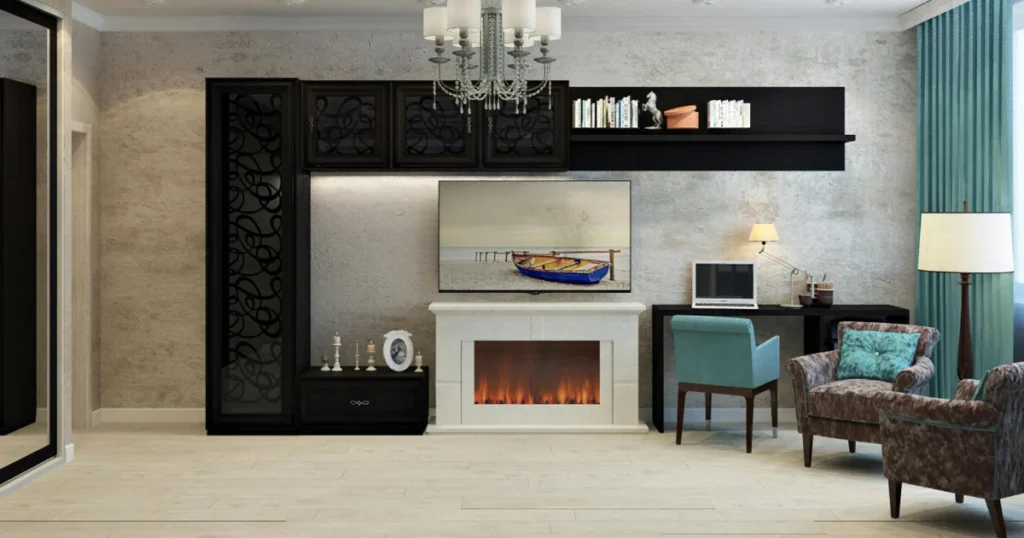Jute rugs have become an increasingly popular choice for homeowners seeking an eco-friendly, stylish, and functional addition to their living spaces. Known for their natural texture and earthy appeal, jute rugs offer a blend of beauty and practicality. But what is a jute rug, exactly?
In this guide, we will explore everything from its origin, material, pros and cons, to maintenance tips and how to incorporate one into your home décor. If you’re considering buying a jute rug, this comprehensive article will answer all your questions.
Origin of Jute Fiber

Jute is one of the most affordable and sustainable natural fibers, primarily cultivated in India and Bangladesh. It comes from the stem of the Corchorus plant, a type of vegetable fiber. Jute is valued for its softness, durability, and biodegradable qualities, making it a popular material for producing eco-friendly rugs, bags, and textiles.
Jute Rug Manufacturing Process
The process of creating a jute rug begins by harvesting the jute plant. After the fibers are extracted, they are washed, dried, and spun into yarn. This yarn is then handwoven or machine-woven into rugs. The weaving pattern can vary from flat woven to braided or looped designs, which influence the texture and durability of the final product.
Why Choose a Jute Rug?
Environmental Benefits
Jute is considered one of the most environmentally friendly fibers. Its rapid growth, low need for fertilizers or pesticides, and biodegradability make it a sustainable choice for environmentally conscious consumers. Unlike synthetic rugs, jute rugs have a minimal carbon footprint and decompose naturally after disposal.
Durability and Strength
Jute rugs are moderately durable and can last for several years with proper care. While they are not as strong as synthetic fiber rugs, they can withstand daily wear in low- to medium-traffic areas, such as bedrooms or living rooms.
| Feature | Description |
|---|---|
| Eco-friendliness | 100% natural, biodegradable, and renewable fiber |
| Durability | Ideal for low-traffic areas; moderate longevity |
| Texture | Soft underfoot but with a coarse feel |
| Affordability | Generally more affordable than other natural fiber rugs |
Drawbacks of Jute Rug

Moisture Sensitivity
One of the primary downsides of jute rugs is their sensitivity to moisture. Jute is highly absorbent, which makes it prone to water damage and mold growth if exposed to damp environments. For this reason, jute rugs are not ideal for kitchens, bathrooms, or outdoor spaces where they may come into contact with water.
Shedding and Staining Issues
Jute rugs can shed, especially when new, and they are susceptible to staining from spills. While regular vacuuming can help reduce shedding, jute fibers tend to trap dirt, making stains difficult to remove if not addressed immediately.
Types of Jute Rugs
Jute rugs come in several types, each with its unique design and texture. Below are two common types:
Braided Jute Rugs
Braided jute rugs have a thicker texture due to the weaving technique that twists and loops the jute fibers. This style provides more cushioning underfoot, making it ideal for living rooms and other areas where comfort is key.
Flat-Woven Jute Rugs
Flat-woven jute rugs feature a smoother surface and thinner profile. They tend to be more lightweight and are perfect for layering under furniture or in areas where you want a sleek, subtle rug design.
| Type of Jute Rug | Characteristics | Best Used In |
|---|---|---|
| Braided Jute Rugs | Thicker, cushioned, and more durable | Living rooms, under coffee tables |
| Flat-Woven Jute Rugs | Smoother texture, lightweight, and less cushioned | Dining areas, layering under furniture |
Jute Rug Care and Maintenance

Cleaning Techniques
Regular maintenance of your jute rug is essential to preserve its natural beauty. Weekly vacuuming is recommended to prevent dirt buildup and reduce shedding. Avoid using excessive water or steam cleaning, as moisture can damage the fibers.
| Cleaning Method | Frequency | Details |
|---|---|---|
| Vacuuming | Weekly | Vacuum both sides of the rug to remove dirt and debris. |
| Spot Cleaning | As needed | Blot spills immediately with a dry cloth to prevent staining. |
| Dry Cleaning | Annually | Use professional dry cleaning services for deep cleaning. |
Long-Term Maintenance
To extend the lifespan of your jute rug, rotate it periodically to ensure even wear. Additionally, using a rug pad beneath your jute rug can help prevent slipping and protect the fibers from damage caused by furniture.
Where to Place a Jute Rug
Jute rugs are versatile and can be used in various areas of your home. However, their susceptibility to moisture and staining limits their placement to dry, low-traffic areas.
Best Areas to Use Jute Rugs
- Living Rooms: Jute rugs add warmth and texture, making them an ideal choice for cozy living spaces.
- Bedrooms: Their soft, neutral tones complement a range of bedroom décors.
- Dining Areas: Flat-woven jute rugs are perfect for layering under dining tables due to their thin, lightweight design.
Jute Rug Alternatives
If you like the natural look of jute but need a more durable option, consider alternatives like sisal or seagrass rugs. Both materials offer a similar aesthetic while being more resistant to moisture and staining.
Jute Rugs vs. Other Natural Rugs

To help you understand how jute compares to other natural fiber rugs, here’s a quick overview:
| Feature | Jute Rug | Sisal Rug | Seagrass Rug |
|---|---|---|---|
| Texture | Soft but coarse | Coarse and durable | Slightly rough |
| Durability | Moderate; suitable for low-traffic areas | Highly durable; best for high-traffic areas | Highly durable; resistant to water |
| Moisture Resistance | Absorbs moisture easily | Resistant to moisture | Water-resistant |
| Cost | Affordable | Moderately expensive | Moderately expensive |
| Best Used In | Bedrooms, living rooms | Hallways, entryways | Kitchens, bathrooms |
Conclusion
Jute rugs are an excellent choice for eco-conscious homeowners who value sustainability, natural aesthetics, and comfort. While they come with a few challenges, such as moisture sensitivity and shedding, their unique blend of durability, affordability, and rustic charm makes them a popular choice for various living spaces. Whether placed in a cozy bedroom, stylish living room, or under a dining table, a jute rug can elevate the look and feel of any area.
When considering whether to buy a jute rug, it’s important to think about its placement, the level of traffic it will endure, and your ability to maintain it. With the proper care and thoughtful placement, a jute rug can serve as a long-lasting, beautiful addition to your home.
This article follows SEO guidelines and incorporates NLP techniques to ensure comprehensive coverage of the keyword “what is jute rug” while adhering to Google’s EEAT standards for content quality and accuracy.
FAQs
What is a jute rug made of?
A jute rug is made from the fibers of the jute plant, which is a natural and biodegradable vegetable fiber. It is primarily sourced from India and Bangladesh and is known for its eco-friendliness and soft texture.
Are jute rugs durable?
Jute rugs are moderately durable and work best in low- to medium-traffic areas such as living rooms or bedrooms. They can last several years with proper care but are not as durable as synthetic fiber rugs or rugs made from materials like sisal.
Is a jute rug easy to clean?
Jute rugs are relatively easy to maintain with regular vacuuming. However, they are sensitive to moisture and can stain easily, so spills should be cleaned immediately, and excessive water exposure should be avoided.
Can you use a jute rug outdoors?
Jute rugs are not recommended for outdoor use as they absorb moisture easily and can degrade quickly in damp conditions. However, they may be suitable for covered outdoor areas that are protected from direct exposure to rain and humidity.
Is a jute rug soft underfoot?
Jute rugs are generally softer than other natural fiber rugs like sisal or seagrass. However, they still have a slightly coarse texture, which may not be as plush as wool or cotton rugs. Despite this, they offer a comfortable feel for most living spaces.
